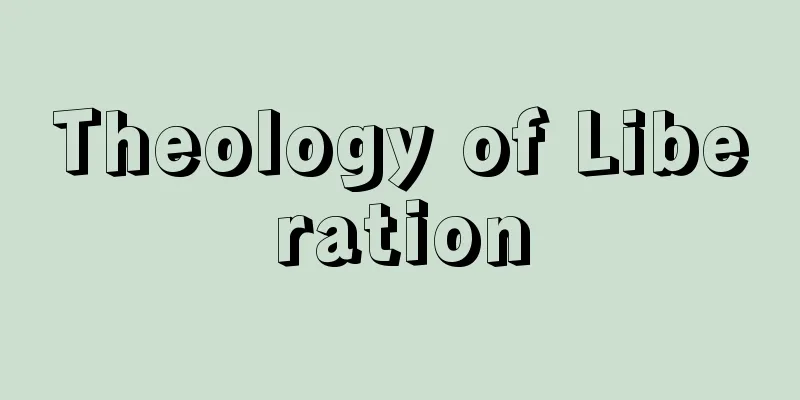Theology of Liberation

|
Following the Second Vatican Council (1962-65), the Roman Catholic Church transformed into a force promoting fundamental human rights, social justice, and democracy. In Latin America, this policy was confirmed at the Second Synod of Bishops held in Medellín, Colombia (1968), and the Catholic Church, which had been responsible for the conservative ruling order since the colonial period, transformed into a force for reform. Progressive bishops and laity questioned secular systems and order in order to liberate people, and stood on the side of the poor to reform unfair social orders such as large land ownership. They established Christian Basic Communities (CEBs) in poor rural and urban areas, interpreted the teachings of the Bible in the light of concrete daily life, and sought to solve various problems by raising awareness among the masses. They played a critical role against the conservative and oppressive military regimes that came into power in the 1970s, defending human rights and promoting democratization. In Central America, it developed into a radical movement that cooperated with revolutionary movements. Theoretically, it is influenced by Marxism, dependency theory, and structural violence theory, and is represented by Peruvian Father Gutierrez and others. In the 1980s, liberation theology came under criticism from within the Catholic Church for its radical stance, which endorsed class struggle and could potentially lead to disregard for church organizations. As the church became more conservative, however, it continued to have an impact on the social activities of the Catholic Church even today. [Shigeo Osonoi] "Gustavo Gutierrez, Liberation Theology: Iwanami Gendai Sensho (1985, Iwanami Shoten)" Source: Shogakukan Encyclopedia Nipponica About Encyclopedia Nipponica Information | Legend |
|
ローマ・カトリック教会は第二バチカン公会議(1962~65年)を経て、基本的人権、社会正義、民主主義を推進する主体に変化したが、ラテンアメリカでは、コロンビアのメデジンで開かれた第2回司教会議(1968年)において、この方針が確認され、植民地以降の保守的な支配秩序を担ってきたカトリック教会は改革勢力に転じた。 進歩派の司教や信徒らは、人々の解放のために世俗的な制度や秩序のあり方を問題にし、貧者の側にたって大土地所有制など不公平な社会秩序の変革に立ち上がった。農村や都市の貧困区にキリスト教基礎共同体(CEB)を打ち立て、聖書の教えを具体的な日常生活に照らして解釈し、民衆層の意識化を進めることで諸問題を解決しようとした。1970年代に誕生した保守的、抑圧的な軍事政権に対しては、批判勢力としての役割を担い、人権を擁護し民主化を推進した。中央アメリカでは革命運動と連携する急進的な動きに発展した。理論的には、マルクス主義、従属論、構造的暴力論の影響を受け、ペルーのグティエレス神父らによって代表される。 1980年代になると、階級闘争を是認し、教会組織の軽視にもつながりかねない急進的な立場は、ローマ教会内部から批判され、教会の保守化傾向とともに、解放の神学は全般的に減退していくが、今日でもカトリック教会の社会活動にその影響を残している。 [遅野井茂雄] 『グスターヴォ・グティエレス著『岩波現代選書 解放の神学』(1985・岩波書店)』 出典 小学館 日本大百科全書(ニッポニカ)日本大百科全書(ニッポニカ)について 情報 | 凡例 |
>>: War of Liberation (English: Befreiungskrieg) German
Recommend
Gayoom, MA - Gayoom
...When the new constitution came into effect in ...
FAMOUS Project
A detailed survey of the central axis of the Mid-A...
The Oxford Gazette
…the official gazette of England. It was first pu...
Bertrand de Born
…His “A Skylark in the Sunlight” is considered hi...
Sovet Soyuza (English spelling)
…[Haruki Wada]. . … *Some of the terminology expl...
Sciapodes
…He also said that varicose veins only occur in m...
King
〘Noun〙① A type of karuta gambling. It is played us...
Olympism
The ideal form of the Olympics as proposed by Coub...
Becker, H.
…He was interned during World War I, but returned...
Beeckman, I.
…He then studied law at the University of Poitier...
Epicycloid - Epicycloid
⇒Cycloid Source: About Shogakukan Digital Daijisen...
Heat pipe
...One of the newest applications is the seawater...
Shedd, JG (English spelling) SheddJG
...But the JG Shedd Aquarium, which opened on Lak...
growth movement
…All of these movements are characterized by bein...
Prime Minister - Josho
[1] (The old word was "shojo". Both &quo...









